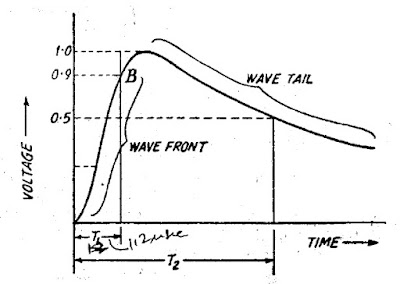This test is necessary for all indoor and outdoor breakers. The test is carried out as follows: Standard impulse wave of specified amplitude is applied five times in succession.
If flash-over or puncture of insulators does not occur, the circuit-breaker is considered to have passed the test. If puncture occurs or if on two or more applied test wave flash-over occurs, the circuit breaker is considered to have failed the test. During the test some waves should be applied with reversal of polarity.
The impulse voltage wave is generated in an Impulse Voltage Generator. During the test one terminal of the impulse generator is connected to the terminal of the circuit breaker pole. The other terminal is connected to the earth and the frame of the circuit breaker.
Standard lightning Impulse is a full impulse having a front time 1.2 μsec and time to half value of 50 μsec. It is described as 1.2/50 impulse as shown in figure below.
Standard switching impulse wave is characterized by prolonged wave-front and wave tail. The typical switching impulse wave has front fen of the order of 250 μs and half time of 2500 μs. The permissible deviation in the crest vale is of the order of 4 to 12%.
The switching impulse wave has been specified for high voltage circuit-breaker rated 420 kV and above.

circuit diagram